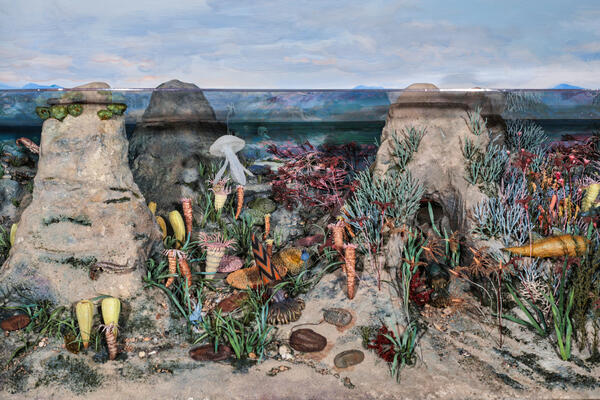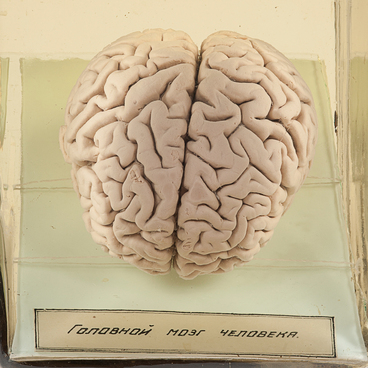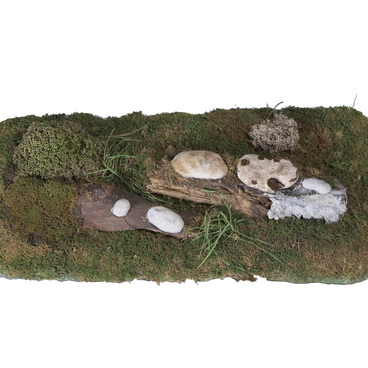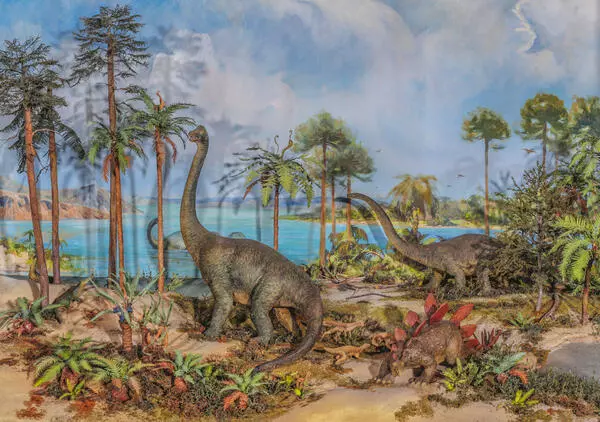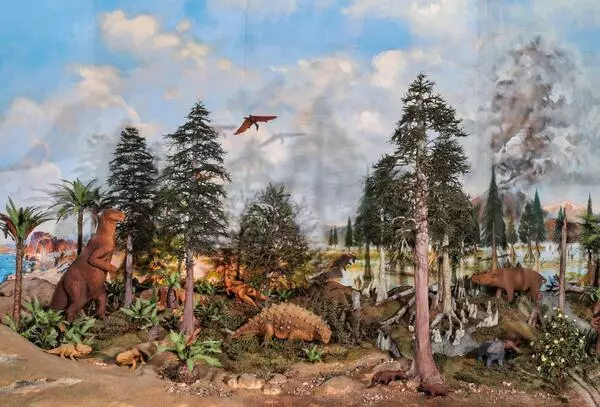The Ordovician period began 505 million years ago. Its name came from the Ordovices‒ancient Celtic tribe who inhabited the territory of modern Wales in the British isles. The deposits of this age were first discovered there.
At the beginning of the Ordovician, life on the Earth bloomed up and during this period, a number of genera in different groups tripled. This was promoted by the expansion of the area of shallow seas. Around Gondwana‒an ancient supercontinent which contained Africa, South America, Antarctica, Australia, New Zealand as well as Arabia, Madagascar and Hindustan‒there were several large continents and many small microcontinents. The sea level rose dramatically and almost all lands were flooded by shallow seas. Animals that used to crawl on the bottom or live in the depths of the slit began intensively exploring the water column. Many of them learned to swim, left the shallow waters and started to live in the seas.
The first true hunters in the oceans were clams with straight or slightly curved shells, the endoceras, a distant relative of the octopus. They grew up to 6–8 meters in length. The endoceras' shells were divided into chambers filled with liquid. By controlling the amount of liquid in them, squids could go down and up to the surface like submarines. These were active animals that developed high speed in the water column.
Trilobites‒marine Anthropods‒were often preys of Endoceras. There were many of them in the Ordovician seas. Some trilobites were small and flat, with long spines. Others had a shovel-shaped nose that helped them dig silt. There were even blind trilobites that lived in holes.
Trilobites had unique eyes with many facets — individual calcite crystals. No one in the history of the Earth had them.
There were also echinoderms — Cystoidea, sea lilies. Almost all of them died out having no descendants. With long stems, many echinoderms attached themselves to stones, shells and shells of trilobites after molting process. They moved little, caught food particles from water and cleared them from turbidity.
Corals, bryozoans, castle brachiopods, graptolites, algae and stromatolites were abundant in the Ordovician period. The fishlike jawless became more diverse than in the Cambrian period.
At the end of the Ordovician period — 440 million years ago — there was mass extinction of many groups of animals. A new glaciation set in. The water temperature at the equator fell from 40 degrees Celsius to 17. Nowadays, it is 28.
At the beginning of the Ordovician, life on the Earth bloomed up and during this period, a number of genera in different groups tripled. This was promoted by the expansion of the area of shallow seas. Around Gondwana‒an ancient supercontinent which contained Africa, South America, Antarctica, Australia, New Zealand as well as Arabia, Madagascar and Hindustan‒there were several large continents and many small microcontinents. The sea level rose dramatically and almost all lands were flooded by shallow seas. Animals that used to crawl on the bottom or live in the depths of the slit began intensively exploring the water column. Many of them learned to swim, left the shallow waters and started to live in the seas.
The first true hunters in the oceans were clams with straight or slightly curved shells, the endoceras, a distant relative of the octopus. They grew up to 6–8 meters in length. The endoceras' shells were divided into chambers filled with liquid. By controlling the amount of liquid in them, squids could go down and up to the surface like submarines. These were active animals that developed high speed in the water column.
Trilobites‒marine Anthropods‒were often preys of Endoceras. There were many of them in the Ordovician seas. Some trilobites were small and flat, with long spines. Others had a shovel-shaped nose that helped them dig silt. There were even blind trilobites that lived in holes.
Trilobites had unique eyes with many facets — individual calcite crystals. No one in the history of the Earth had them.
There were also echinoderms — Cystoidea, sea lilies. Almost all of them died out having no descendants. With long stems, many echinoderms attached themselves to stones, shells and shells of trilobites after molting process. They moved little, caught food particles from water and cleared them from turbidity.
Corals, bryozoans, castle brachiopods, graptolites, algae and stromatolites were abundant in the Ordovician period. The fishlike jawless became more diverse than in the Cambrian period.
At the end of the Ordovician period — 440 million years ago — there was mass extinction of many groups of animals. A new glaciation set in. The water temperature at the equator fell from 40 degrees Celsius to 17. Nowadays, it is 28.

